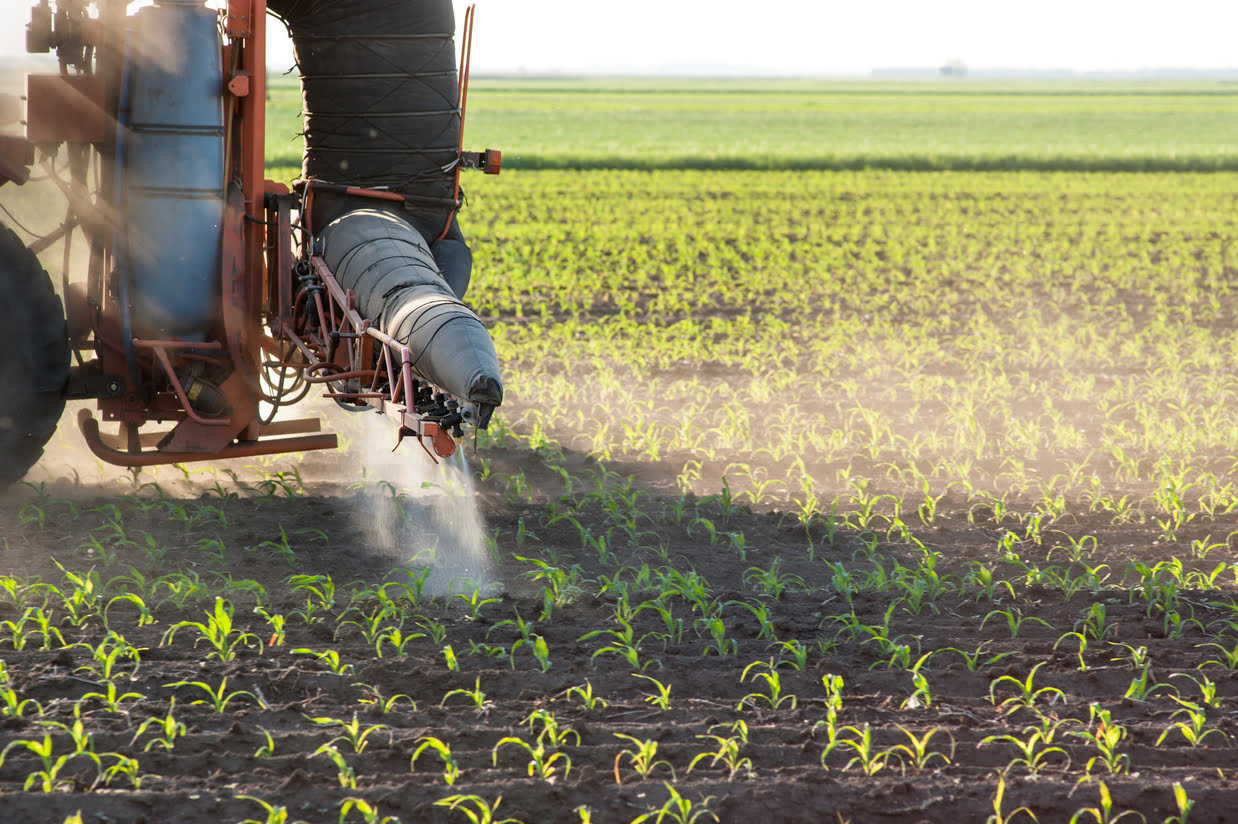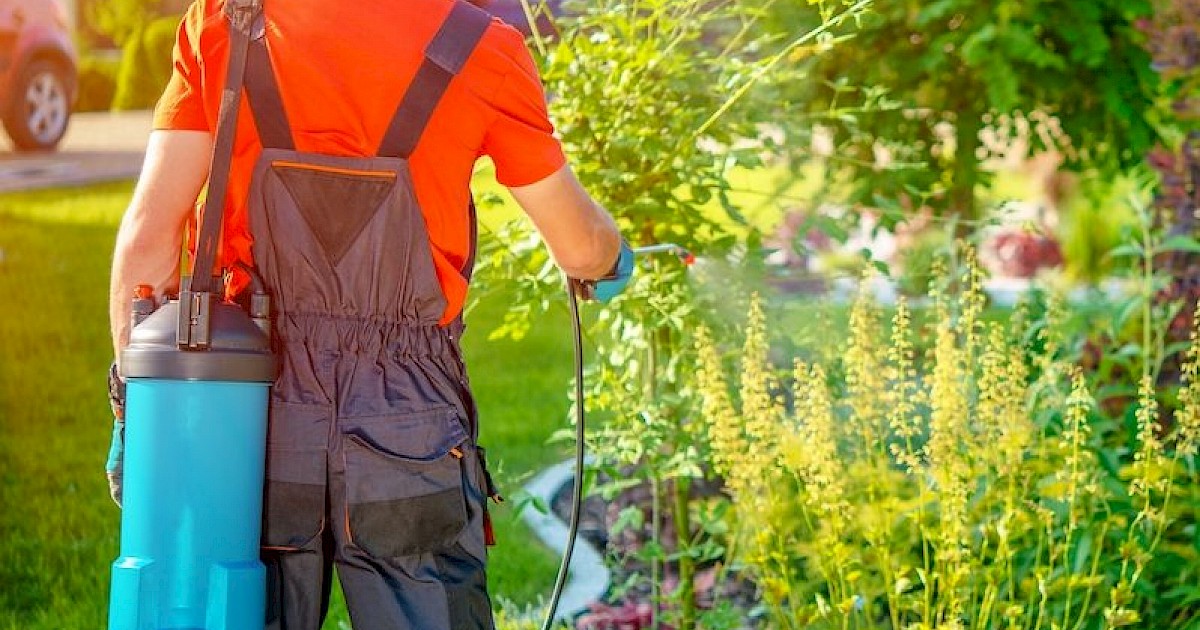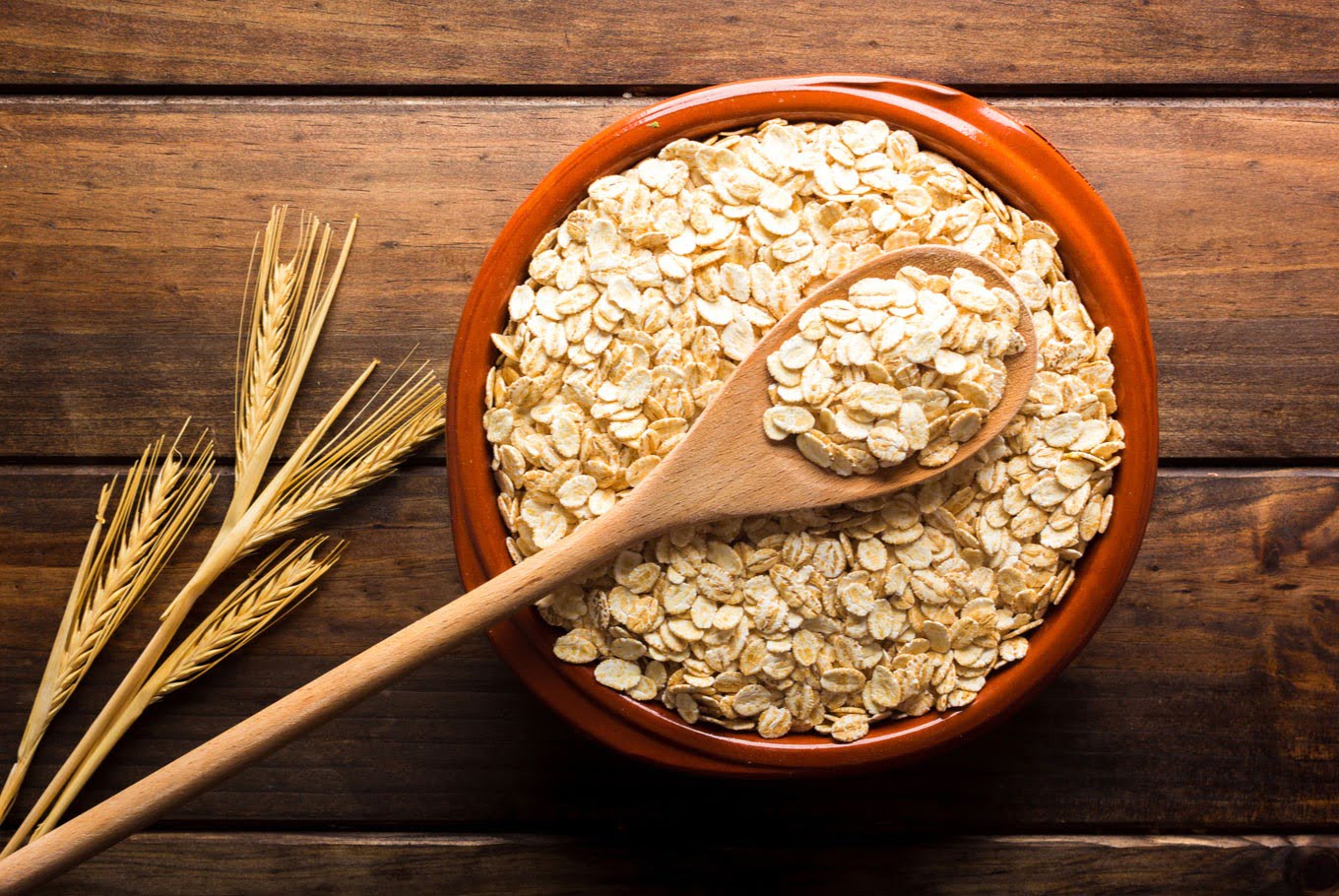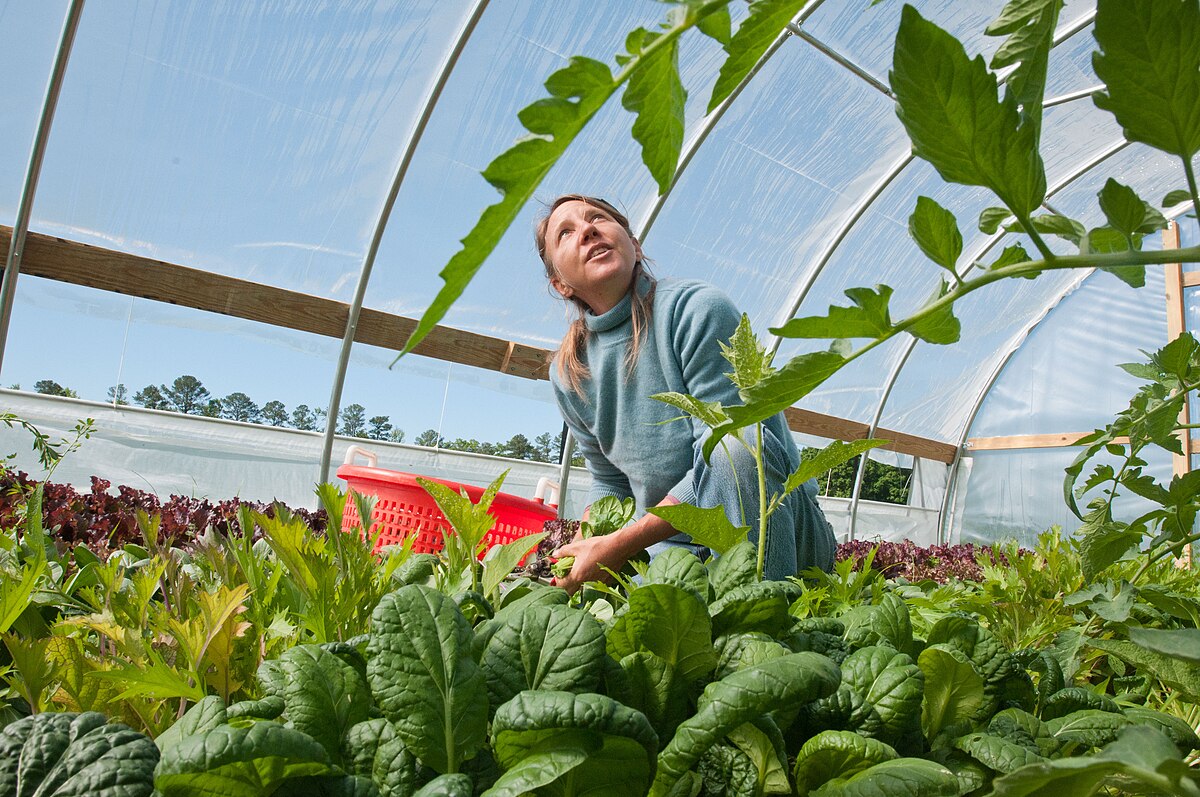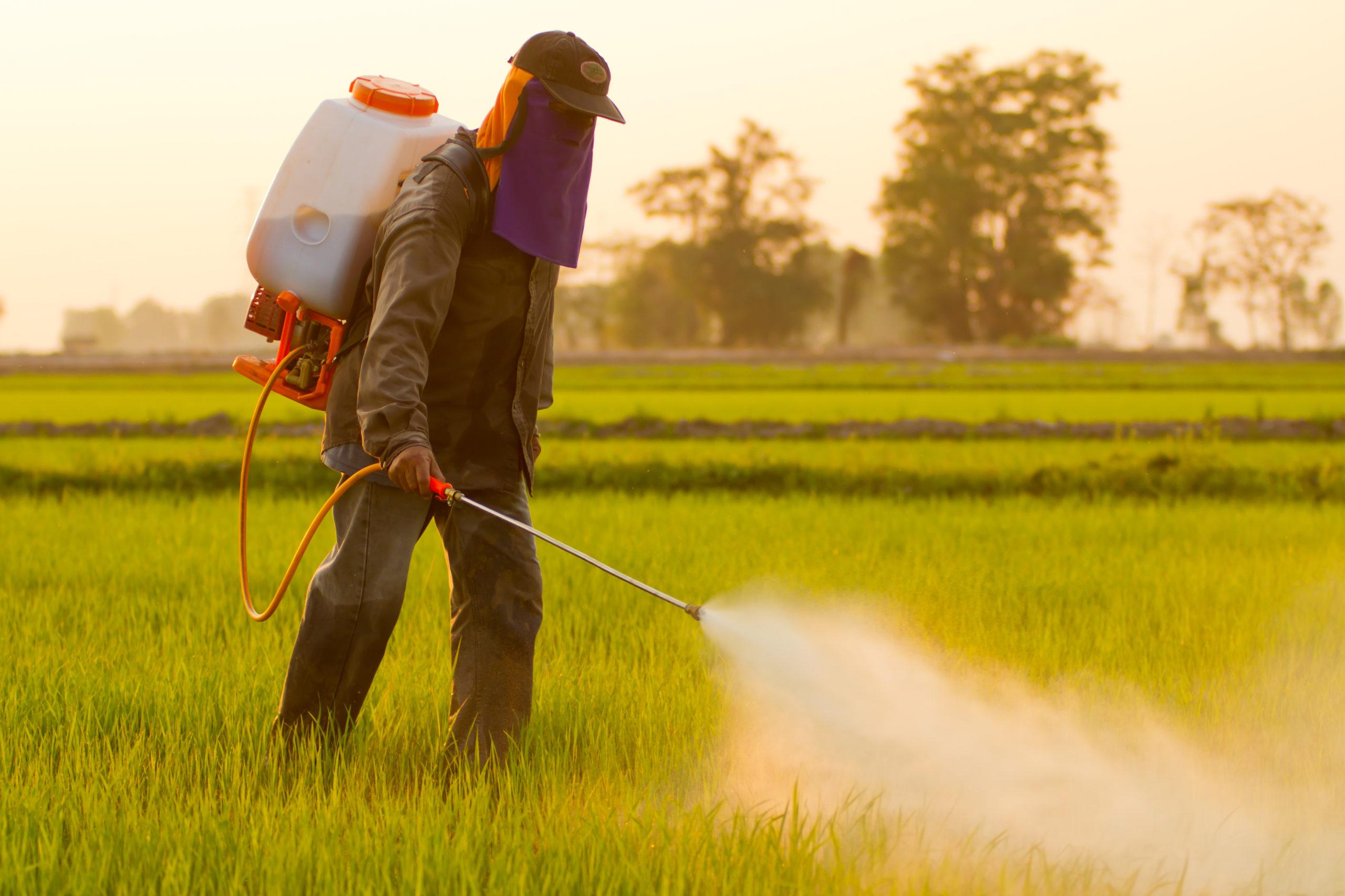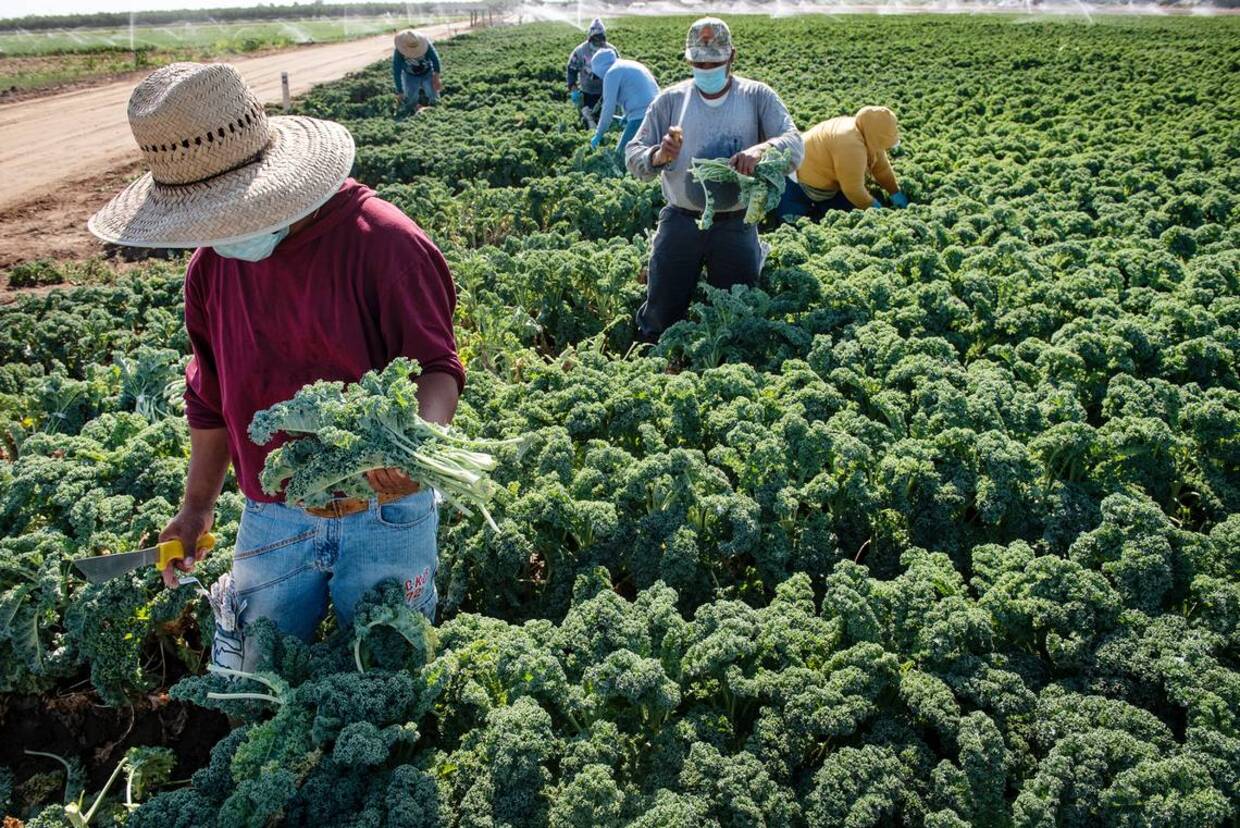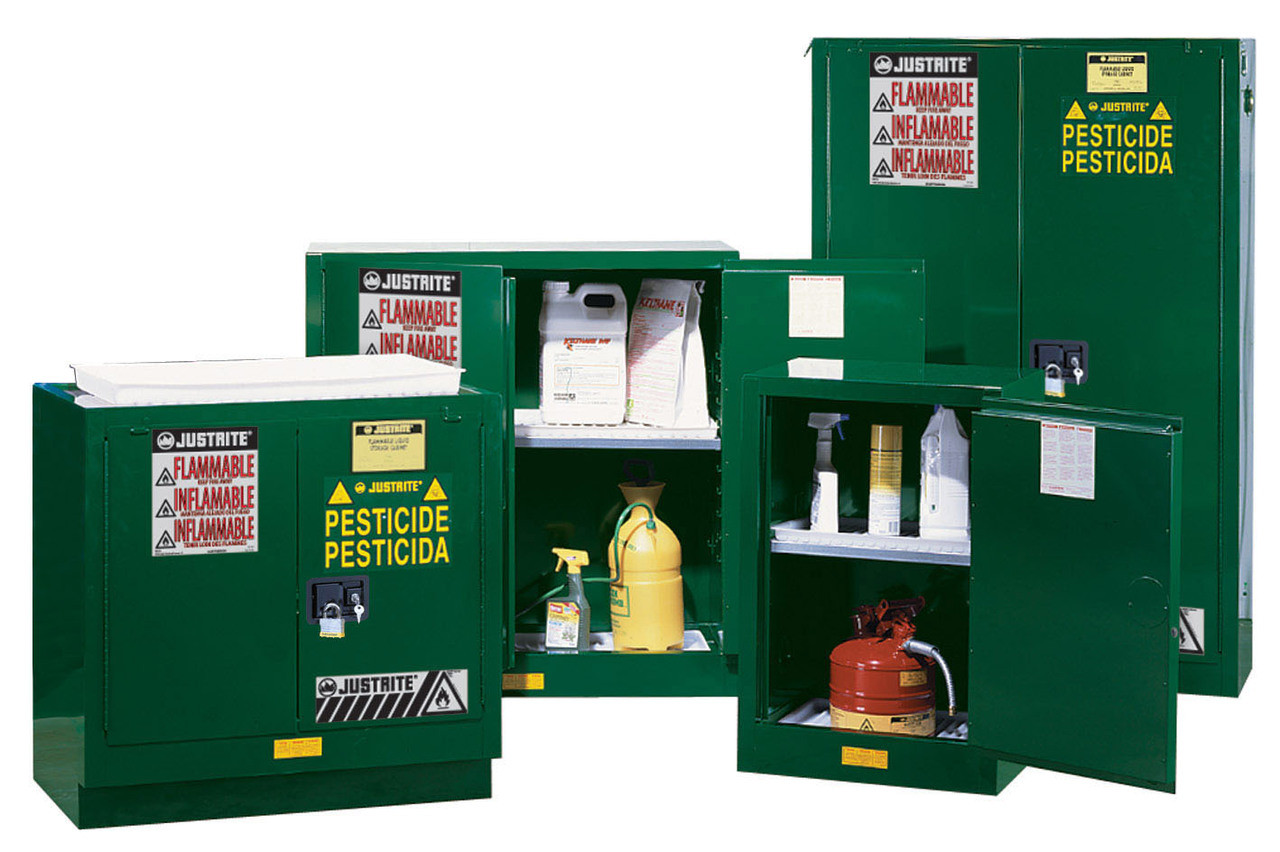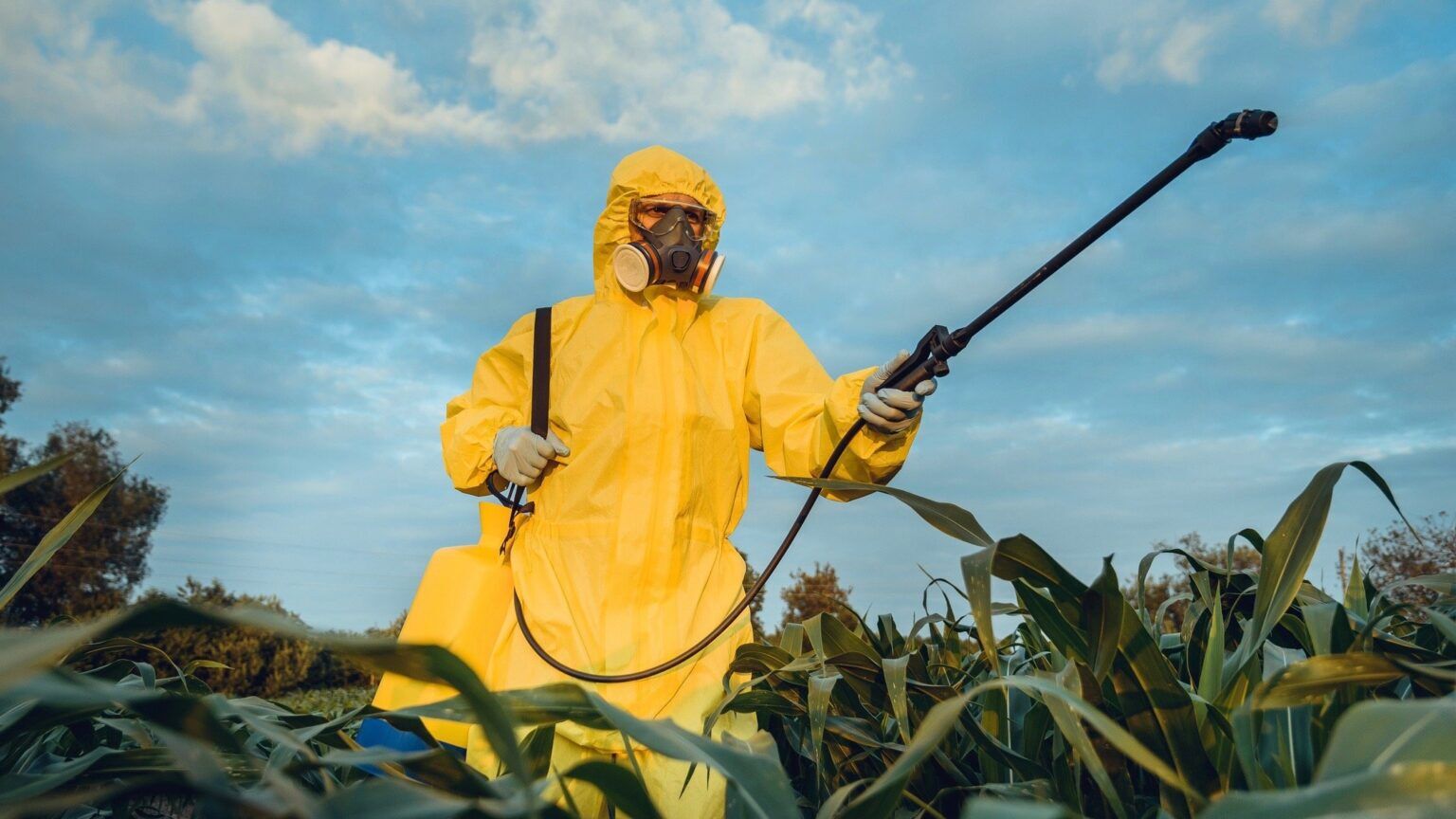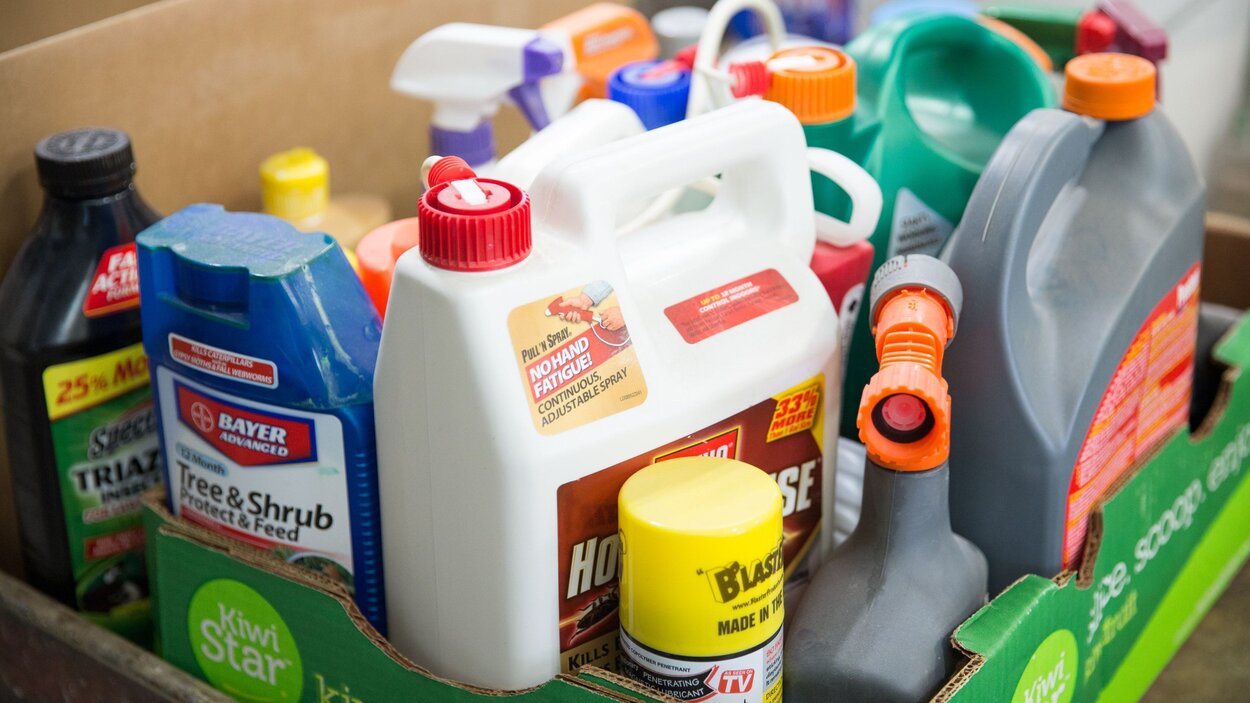Home>Gardening News and Trends>Latest News>What Are Pesticides
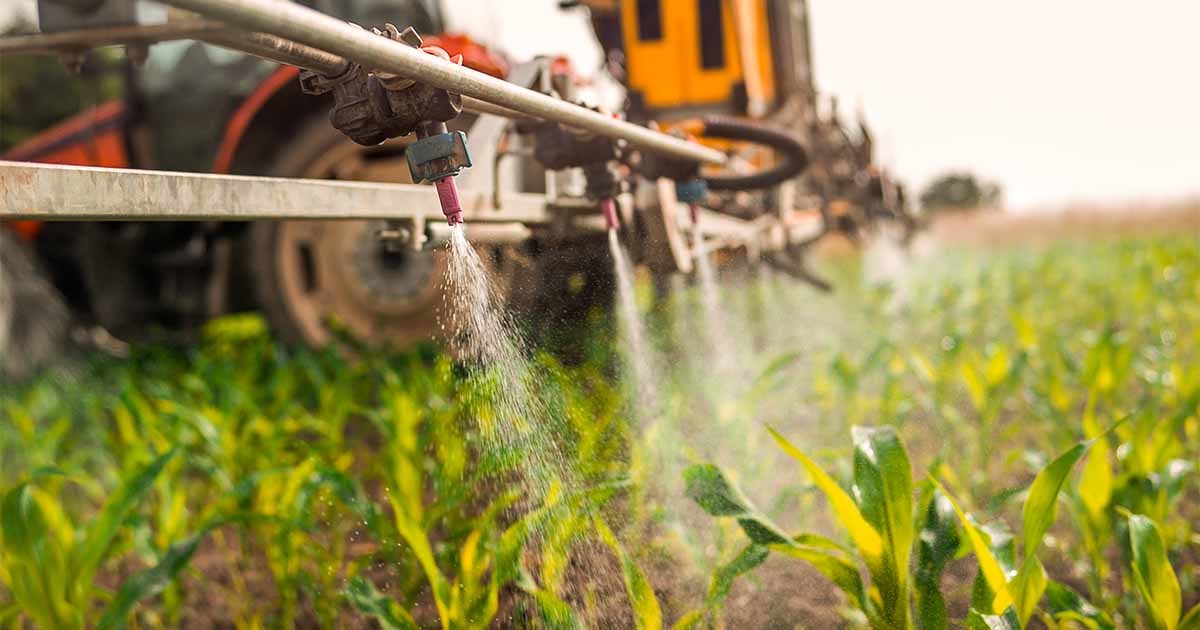

Latest News
What Are Pesticides
Modified: January 22, 2024
Stay updated with the latest news on pesticides. Learn about their impact on the environment, health effects, and safe alternatives.
(Many of the links in this article redirect to a specific reviewed product. Your purchase of these products through affiliate links helps to generate commission for Chicagolandgardening.com, at no extra cost. Learn more)
Table of Contents
Introduction
Welcome to the world of pesticides, where science meets agriculture to shape our food production systems. Pesticides play a crucial role in protecting crops, controlling pests, and ensuring high yields. However, they have become a topic of intense debate due to potential environmental and health impacts. In this article, we will explore the essential aspects of pesticides, including their definition, types, common uses, and the concerns they raise.
Pesticides are chemical substances used to control, repel, or eliminate pests that can damage crops, livestock, or human health. These pests include insects, weeds, fungi, bacteria, and other organisms that can threaten agricultural productivity. By using pesticides, farmers can protect their crops from pests that would otherwise result in significant losses.
There are various types of pesticides, each designed to target specific pests and tailored to different application methods. Insecticides, for example, are used to control insect populations, while herbicides target unwanted weeds. Fungicides, on the other hand, are used to prevent or eliminate fungal diseases. Additionally, there are pesticides designed to control rodents, birds, and other pests that can cause damage or transmit diseases.
The use of pesticides in agriculture is widespread and has revolutionized food production, allowing farmers to produce higher yields and ensure crop quality. Pesticides help prevent damage caused by pests, such as reduced crop growth, yield loss, quality degradation, and even complete crop failure. By effectively managing pests, farmers can meet the demands of a growing global population and ensure a stable and abundant food supply.
However, the use of pesticides comes with potential environmental and health concerns. Pesticides can accumulate in the soil, water bodies, and food chain, endangering non-target organisms like beneficial insects, birds, and aquatic life. Moreover, some pesticides have been linked to adverse health effects in humans, including respiratory issues, skin irritations, and even chronic diseases. The overreliance on pesticides can also lead to the development of pesticide resistance in pests, making control methods less effective over time.
Definition of Pesticides
Pesticides are chemical or biological substances that are used to manage, prevent, or eliminate pests. Pests can include insects, weeds, fungi, bacteria, and other organisms that pose a threat to crops, livestock, or human health. The primary purpose of pesticides is to protect agricultural produce and ensure high yields. They are widely used in farming, gardening, public health programs, and other industries.
These chemical compounds act on pests by interfering with their basic biological functions, such as disrupting their reproductive systems, damaging their nervous systems, or inhibiting their ability to feed and grow. By doing so, pesticides effectively control or eradicate pests, minimizing the damage they can cause to crops or the risks they may pose to human health.
There are different types of pesticides, classified based on the pests they target and the method of application. Insecticides are pesticides designed to kill or repel insects. They can be further categorized into systemic insecticides, which are absorbed by the plant and spread throughout its tissues, and contact insecticides, which only affect insects that come into direct contact with the treated surface.
Herbicides, or weed killers, are used to control unwanted vegetation. They can be selective, targeting specific types of weeds, or non-selective, eliminating all plant growth in the treated area. Fungicides are pesticides that combat fungal diseases, such as mildew, rust, and blight, which can damage crops or plants.
Bactericides and virucides are pesticides used to manage bacterial and viral diseases, respectively. These substances help prevent the spread of harmful bacteria and viruses that can infect plants, animals, or humans. Rodenticides are pesticides used to control and eliminate rodents, while avicides target birds that can cause damage or pose a health risk.
Biological pesticides, also referred to as biopesticides, are derived from natural materials such as plants, bacteria, or fungi. These pesticides utilize the natural mechanisms of certain organisms to control pests. They are often considered safer for the environment and human health compared to synthetic chemical pesticides.
It is essential to use pesticides judiciously and follow proper application techniques to maximize their effectiveness while minimizing potential risks. This includes considering factors such as pest resistance, environmental impact, and the health and safety of sensitive populations.
Types of Pesticides
Pesticides come in various forms and are classified based on the pests they target and the method of application. Understanding the different types of pesticides is crucial for effective pest management and ensuring the safety of crops, humans, and the environment. Let’s explore some of the most common types of pesticides:
- Insecticides: These pesticides are specifically designed to control and eliminate insects. Insecticides can be further categorized into contact insecticides, which kill insects upon direct contact, and systemic insecticides, which are absorbed by plants and spread throughout their tissues, providing long-lasting protection against pests.
- Herbicides: Herbicides are used to manage unwanted weeds and vegetation. They can be selective, targeting specific types of weeds, or non-selective, which eliminate all plant growth in the treated area. Herbicides play a critical role in maintaining crop quality, preventing competition for resources, and ensuring better plant growth.
- Fungicides: These pesticides are utilized to combat fungal diseases that can damage crops and plants. Fungicides work by preventing or inhibiting the growth and spread of fungi, protecting plants from diseases such as powdery mildew, rust, and blight.
- Bactericides and Virucides: Bactericides are pesticides used to manage bacterial diseases, while virucides are used to control viral infections. These pesticides help prevent the spread of harmful bacteria and viruses, protecting crops, animals, and human health.
- Rodenticides: Rodenticides are pesticides formulated to control and eliminate rodent populations. These substances are particularly important for preventing damage to crops, buildings, and infrastructure caused by rodents. It is essential to use rodenticides with caution to avoid unintended harm to non-target animals and to follow proper disposal methods to protect the environment.
- Avicides: Avicides are pesticides developed to deter or eliminate birds that can cause damage to crops, property, or pose a threat to human health. These pesticides are often used in specific situations where bird populations need to be controlled to minimize risks and protect valuable resources.
- Biological Pesticides: Biological pesticides, also known as biopesticides, are derived from natural materials such as plants, bacteria, or fungi. These pesticides utilize the natural mechanisms of certain organisms to control pests. Biological pesticides are often considered safer for the environment and human health compared to synthetic chemical pesticides.
It is crucial to choose the appropriate type of pesticide based on the specific pest problem and carefully follow the instructions for safe and effective use. Integrated Pest Management (IPM) practices can also help reduce reliance on pesticides by incorporating a combination of preventive measures, biological controls, and cultural practices to manage pests effectively.
Common Uses of Pesticides
Pesticides are widely used in various industries and settings to manage and control pests. Their primary purpose is to protect crops, livestock, and human health by minimizing the damage caused by pests. Let’s explore some of the common uses of pesticides:
- Agriculture: Pesticides play a crucial role in modern agriculture, protecting crops from pests and disease. Farmers use pesticides to control insect populations, eliminate weeds, prevent fungal infections, and manage other pests that can damage crops and reduce yields. By using pesticides effectively, farmers can improve agricultural productivity and ensure a sufficient food supply to meet the demands of a growing population.
- Gardening and Landscaping: Pesticides are commonly used in gardening and landscaping to maintain the health and appearance of plants and lawns. Home gardeners often use insecticides, herbicides, and fungicides to control pests, weeds, and diseases that can harm plants and trees. Pesticides help to preserve the aesthetic value of gardens and ensure the growth and vitality of ornamental plants.
- Public Health and Vector Control: Pesticides are employed in public health programs to control disease-carrying organisms and vectors. Mosquito control programs, for example, use insecticides to reduce mosquito populations and prevent the spread of diseases such as malaria, dengue fever, and Zika virus. Similarly, pesticides are used to control pests like ticks and fleas that can transmit diseases to humans and animals.
- Structural Pest Control: Pesticides are utilized in the management of pests that invade and damage buildings and structures. Pest control professionals use specialized pesticides to eliminate termites, ants, cockroaches, bedbugs, and other pests, ensuring the structural integrity of buildings and protecting human health from potential allergens or disease vectors.
- Animal Health: Pesticides are also used in veterinary medicine to protect livestock and domestic animals from pests and parasites. Farmers and animal owners use pesticides such as acaricides to control ticks and mites, insecticides to eliminate fleas and flies, and antiparasitic drugs to manage internal parasites. These measures help to maintain the well-being, health, and productivity of animals.
- Forestry: Pesticides are employed in forestry to protect trees and prevent damage caused by pests, such as defoliating insects and tree-killing fungi. By using pesticides, foresters can maintain healthy forests, protect valuable timber resources, and reduce the spread of pests to neighboring trees and ecosystems.
It is important to note that while pesticides provide significant benefits, their use should be responsible and follow appropriate regulations and safety guidelines. Integrated Pest Management (IPM) practices can help minimize the reliance on pesticides by combining preventive measures, monitoring, and targeted pesticide applications to reduce potential risks to human health and the environment.
Environmental and Health Concerns
The use of pesticides in agriculture and other industries has raised significant concerns about their potential impact on the environment and human health. While pesticides have been instrumental in increasing food production and preventing the spread of diseases, their widespread use comes with certain risks. Let’s explore some of the environmental and health concerns associated with pesticides:
- Environmental Impact: Pesticides can have detrimental effects on the environment. They can contaminate soil, water bodies, and air, potentially affecting non-target organisms including beneficial insects, birds, fish, and other wildlife. Runoff from fields and improper disposal of pesticide containers can lead to water pollution, disrupting aquatic ecosystems and threatening water supplies. Pesticide residues can also accumulate in the soil, leading to long-term impacts on soil health and fertility.
- Potential Harm to Non-Target Organisms: Pesticides, especially broad-spectrum ones, have the potential to harm beneficial insects, such as bees, butterflies, and other pollinators, that play a critical role in plant reproduction and food production. Similarly, birds, fish, and other wildlife can be affected by the ingestion of pesticides or through the contamination of their habitat. The loss of these important species can have cascading effects on ecosystems and biodiversity.
- Pesticide Resistance: The over-reliance on pesticides has led to the development of pesticide resistance in many pest species. Through repeated exposure to the same pesticide, pests can develop genetic mutations that make them less susceptible or immune to its effects. This can render certain pesticides ineffective, requiring farmers to use higher doses or switch to different pesticides, leading to increased chemical usage and potentially exacerbating environmental and health concerns.
- Health Effects on Humans: There is growing concern about the potential health effects of pesticide exposure on human populations. Prolonged or excessive exposure to certain pesticides has been associated with various health issues, including respiratory problems, skin irritations, neurological disorders, hormonal imbalances, and even certain types of cancers. Children, pregnant women, and individuals with compromised immune systems may be more susceptible to the adverse effects of pesticide exposure.
- Occupational Risks: Individuals who work with pesticides, such as farmers, agricultural workers, and pest control professionals, are at a higher risk of pesticide exposure. Without proper protective measures and training, they may experience acute or chronic health effects from direct contact, inhalation, or ingestion of pesticides. Occupational safety regulations and the use of personal protective equipment are crucial in minimizing these risks.
To address these concerns, regulatory agencies have established safety standards and guidelines for the registration and use of pesticides. These regulations aim to ensure that pesticides are used responsibly, minimizing risks to the environment and human health. Additionally, the adoption of alternative pest management practices, such as Integrated Pest Management (IPM), can help reduce the reliance on pesticides by incorporating a combination of preventive measures, biological controls, cultural practices, and targeted pesticide applications.
Regulations and Safety Measures
To address the potential risks associated with pesticide use, regulatory bodies around the world have established guidelines and safety measures to ensure the responsible and safe application of pesticides. These regulations aim to protect the environment, human health, and the well-being of users. Let’s explore some of the key aspects of pesticide regulation and safety measures:
- Pesticide Registration: Before a pesticide can be sold and used, it must undergo a rigorous evaluation and registration process by regulatory agencies. This process involves assessing the pesticide’s effectiveness, potential environmental impacts, and human health risks. Only pesticides that meet the required standards are granted registration and can be legally used.
- Labeling and Packaging: Pesticide labels provide essential information on proper handling, storage, application rates, and safety precautions. The label includes instructions for use and guidelines to protect human health and the environment. It is crucial for users to read and follow the label instructions carefully to ensure safe and effective pesticide application.
- Restricted and Prohibited Pesticides: Regulatory agencies identify certain pesticides as restricted or prohibited due to their high risk to human health or the environment. These pesticides may only be used by certified applicators who have undergone specific training and follow strict guidelines. Prohibited pesticides are entirely banned due to severe risks and should not be used under any circumstances.
- Safety Training and Certification: Many countries require individuals who handle and apply pesticides to undergo proper training and obtain certification. This training includes information on pesticide safety, proper use, protective equipment, and emergency protocols. Applicators who are certified demonstrate their understanding of safe pesticide practices and are more equipped to handle potential risks.
- Protective Equipment: Personal Protective Equipment (PPE) plays a crucial role in minimizing pesticide exposure. Users should wear the appropriate protective clothing, such as gloves, goggles, respirators, and coveralls, as specified on the pesticide label. Proper training on the use and maintenance of PPE is necessary to ensure its effectiveness in reducing exposure risks.
- Buffer Zones and Application Restrictions: To protect non-target organisms and minimize environmental impact, regulatory agencies often specify buffer zones around sensitive areas, such as water bodies, schools, or residential neighborhoods. These buffer zones help prevent pesticide drift and potential exposure to unintended targets. Furthermore, there may be restrictions on the timing and frequency of pesticide applications to minimize environmental and health risks.
It is essential for users to adhere to these regulations and safety measures to ensure the responsible use of pesticides. By following proper pesticide handling, application techniques, and safety guidelines, we can minimize potential risks and achieve effective pest management while safeguarding the environment and human health.
Alternatives to Pesticides
While pesticides have been a key tool in controlling pests, there is a growing recognition of the need for alternative approaches that minimize environmental impact and reduce potential health risks. Integrated Pest Management (IPM) practices and the adoption of sustainable agricultural methods offer viable alternatives to traditional pesticide use. Let’s explore some of the alternatives to pesticides:
- Cultural Practices: Cultural practices involve modifying agricultural practices to prevent or reduce pest infestations. These practices include crop rotation, intercropping, and the use of pest-resistant varieties. By diversifying crops and disrupting pest life cycles, cultural practices create an unfavorable environment for pests, reducing the need for pesticides.
- Biological Controls: Biological control methods utilize natural enemies of pests, such as predators, parasitoids, and pathogens, to regulate pest populations. Introducing beneficial insects, using microbial agents, or employing botanical extracts can help control pests while minimizing the use of chemical pesticides. Biological control methods are often more sustainable and have minimal impact on non-target organisms.
- Physical Barriers: Physical barriers, such as nets, fences, or screens, can be used to physically prevent pests from accessing crops. These barriers act as a barrier, preventing pests from causing damage without the need for chemical interventions. Physical barriers are particularly effective in protecting high-value crops or in situations where pests can be effectively excluded.
- Trap Crops and Pheromone Traps: Trap crops are specific plants grown to attract pests away from the main crop. By redirecting pests to these alternative host plants, trap crops minimize damage to primary crops. Pheromone traps utilize synthetic chemicals that mimic insect pheromones to attract and trap pests. These traps help to monitor and reduce pest populations without relying on chemical pesticides.
- Soil Management: Healthy soil management practices enhance soil fertility and promote plant vigor, which in turn can help crops withstand pest attacks. By improving soil health through practices such as organic matter addition, composting, and crop rotation, farmers can build resilient ecosystems that naturally suppress pests and reduce the reliance on chemical interventions.
- Education and Monitoring: A proactive approach to pest management involves educating farmers, gardeners, and agricultural professionals about pest biology, monitoring techniques, and early detection methods. Regular monitoring allows for timely intervention when pest populations reach thresholds, helping to prevent outbreaks and minimize damage to crops.
By incorporating these alternative methods and practices, farmers and gardeners can achieve effective pest control while reducing reliance on synthetic chemical pesticides. The integration of different approaches under the framework of Integrated Pest Management (IPM) promotes a holistic and sustainable approach to pest management, focused on long-term solutions that prioritize environmental and human health.
Conclusion
Pesticides play a crucial role in modern agriculture and pest management, helping to protect crops, control pests, and ensure food security. However, it is essential to be aware of the potential environmental and health concerns associated with their use. Regulatory bodies have implemented strict guidelines and safety measures to ensure responsible pesticide use and mitigate the risks presented by these chemical substances.
By understanding the various types of pesticides, their common uses, and the concerns they raise, we can make informed decisions about their application and explore alternative approaches. Integrated Pest Management (IPM) practices, such as cultural methods, biological controls, physical barriers, and soil management, offer sustainable alternatives to traditional pesticide use. These approaches minimize environmental impact, reduce the development of pesticide resistance, and protect the health and well-being of humans and other organisms.
The adoption of safe handling practices, proper training, and the wearing of protective equipment is crucial for people working with pesticides. Additionally, monitoring pest populations and implementing preventive measures can minimize the need for pesticide intervention.
As we move forward, it is important to continue researching and developing innovative alternatives to chemical pesticides. Investment in sustainable agriculture practices, the use of advanced technology, and the promotion of organic farming methods can lead to a more sustainable and environmentally friendly approach to pest management.
By balancing the benefits of pesticides with their potential risks and adopting responsible practices, we can strike a harmonious balance between agricultural production, environmental conservation, and human health. With continued efforts and collaboration, we can ensure a safer and more sustainable future for pest management.
